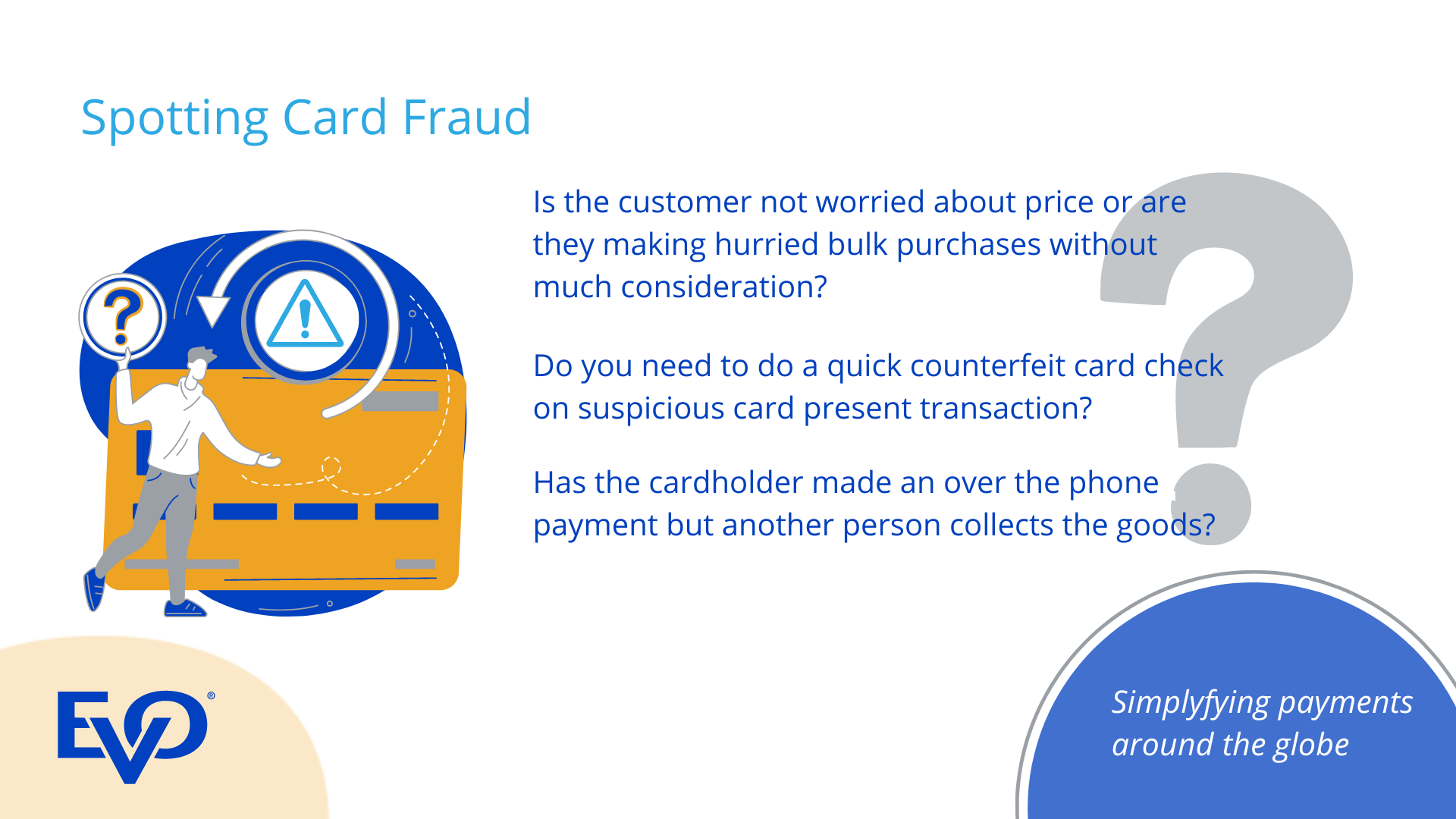
16 Feb Card fraud prevention: How to spot it and protect your business
Card fraud remains a growing risk for all businesses with criminals continuing to devise new approaches and schemes to deceive businesses and cardholders. However, the payments and banking industry is keeping pace with £480 million of card fraud stopped by banks and card companies in the first six months last year – the equivalent to £6.39 in every £10 of attempted card fraud prevented without a loss occurring.
With sophisticated methods of fraud prevention thwarting fraudsters’ more innovative efforts , criminals are relying on low-tech methods such as distraction thefts and card entrapment at ATMs to commit card fraud. Expectedly, with restrictions fully lifted last year, lost and stolen card fraud increased by almost 30%.
Understanding what card fraud looks like and how fraudsters might act in person or over the phone is the first step to preventing criminals successfully targeting your business. Here’s what to look out for…
Spotting a suspicious customer is the first step in preventing card fraud
Whether in-person or over the phone, customers acting suspiciously is the first step in spotting card fraud. A person using a stolen or counterfeit card may appear agitated or nervous and/ or is may take an unusual amount of time completing the transaction. Here are other indicators that they may be using a stolen card:
Is the customer…?
- not worried about price or are they making hurried bulk purchases without much consideration?
- only interested in getting the maximum amount of cashback from a transaction?
- unaware of how much money is on the card and makes purchases at lower transaction values until a sales is authorised?
- unsure of their personal details, i.e. postcode, spelling of street name?
Taking payment when the card is present
Using Chip and PIN / Contactless on your card terminal offers your business the best protection against potential card fraud. By not using these security features, and allowing a cardholder to swipe or sign, you open your business up to being targeted by fraudsters using stolen or cloned cards. It’s important to be cautious in these situations, especially if you don’t know the cardholder.
4 quick checks for counterfeit cards
- Use an Ultra Violet to check if a card is genuine as most cards have special features that show up under UV light.
- Make sure the number printed on the terminal sales receipt is the same as that on the front of the card
- Compare the name on the card with the signature and the signed voucher to see if there are any discrepancies
- Look out for potentially tampered signature strips on the card or if the original signature has been covered over
Completing transactions when you can’t see the card (i.e. over the phone)
Card fraud is especially a risk for businesses that accept card payments where the card is not physically present (i.e. taking payments over the phone, through a virtual terminal, or in-person sales where a business puts card details through their point of sales terminal without using the chip security/ contactless functionality). In the first half of 2022, authorities reported over a million cases of CNP fraud recorded in the UK (This figure – 1,131, 704 – includes online and mail order transactions as well as over the phone purchases). CNP fraud may leave your business liable to a chargeback dispute. Here’s what to consider.
Suspicious card combinations indicating potential card fraud
- Transactions on several cards where the billing address matches but there are different or various shipping addresses
- Multiple transactions on a single cars over a very short period of time
- Multiple cards beginning with the same six digits offered immediately after the previous cards are declined
- Customers offering multiple cards one after the other when previous cards are declined
With orders and shipping, watch out for…
- suspicious multiple or bulk order where customers are buying lots of the same items either in the same transactions or separately.
- first time customers placing multiple orders. The risk of fraud is smaller when dealing with customers you know
- order larger than normal for your business as this may indicate attempted fraud.
- orders being sent overseas especially with new/ unknown customers
- requests to send goods to hotels, guest houses and PO boxes
- situations where the person collecting the goods is different from the cardholder you spoke to over the phone


